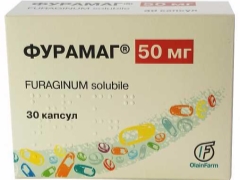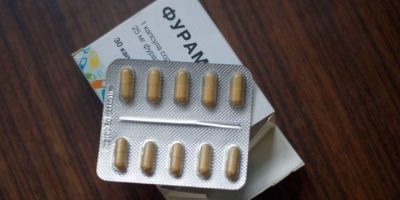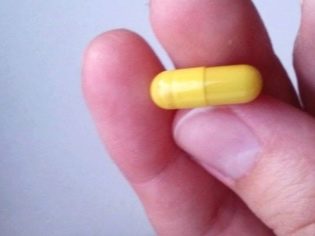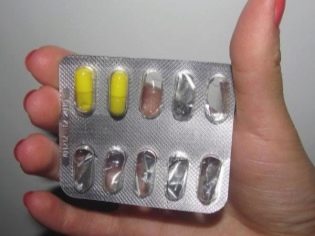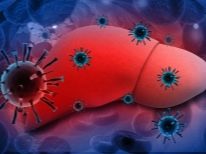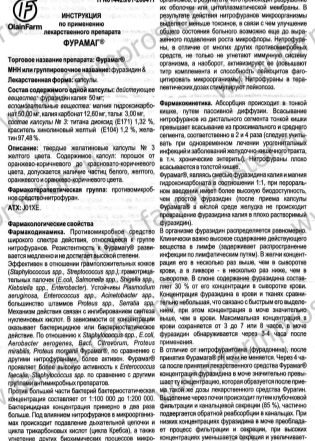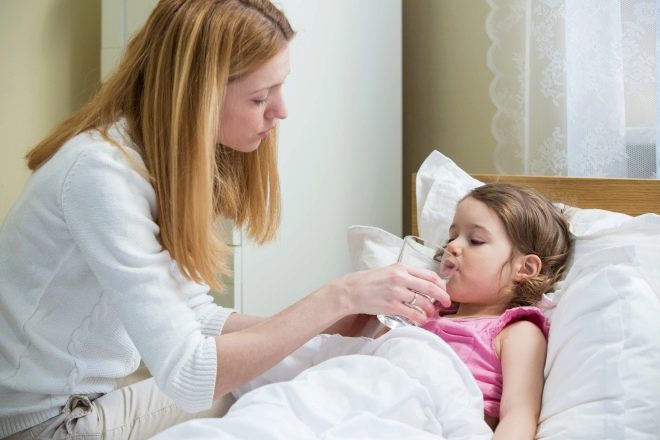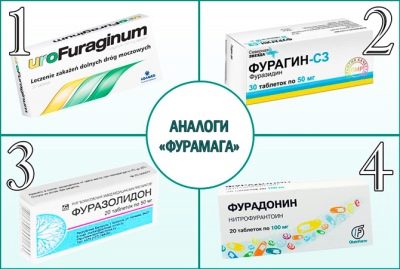Furamag for children: instructions for use
"Furamag" is one of the sought-after drugs in the practice of urologists and gynecologists. This tool belongs to the group of nitrofurans and can affect harmful bacteria that often infect the kidneys, bladder and other pelvic organs. Doctors note the high effectiveness of such a drug and can prescribe it in childhood.
Release form and composition
"Furamag" is a product of the Latvian manufacturer Olainfarm and is available in only one dosage form. These are capsules that are packaged in blisters of 10 pieces and sell from 20 to 50 capsules in one pack. Their active ingredient is furazidin, presented in the preparation in the form of furazidina potassium.
Depending on the amount of such an ingredient, the capsules have two different dosages. The preparation, which contains 25 mg of furazidine potassium, is distinguished by a brown-yellow color and size No. 4, and inside the dense gelatin shell is an orange-brown powder. In capsules that contain 50 mg of the active ingredient, yellow shade and size No. 3, and also brown or orange powder is placed inside.
Almost all capsule auxiliaries match and are represented by talc, magnesium hydroxycarbonate and gelatin, as well as potassium carbonate and titanium dioxide. Different in the composition of the capsules with different dosage of furazidina is only a dye.
Operating principle
"Furamag" is characterized by antimicrobial effects on many types of microorganisms, therefore, the spectrum of influence of such a drug is called wide. It inhibits the synthesis of nucleic acids and many biochemical processes that take place in the cells of bacteria, which leads to a slowdown in their growth. In low concentrations, the drug has a bacteriostatic effect, but in high doses it destroys microbes.
Capsules have a high activity against Escherichia, enterococci, Klebsiella, streptococci, Salmonella and many other pathogens. However, the drug may not work on some strains of Proteus, as well as on enterococci, pseudomonads, serrata and acinetobacters.
If the bacterium is sensitive, then resistance to the drug develops slowly. At the same time, the immune system during the treatment with “Furamag” is not oppressed, but more actively fights the infection.
Indications
Most often, “Furamag” is written out when urogenital organs are affected by bacteria: for example, in acute cystitis, pyelonephritis or urethritis. The drug is also in demand for skin infections, infected burns and infectious inflammation of the soft tissues. The doctor can prescribe capsules and prophylactically if the patient has to undergo some urological surgery or manipulation (for example, cystoscopy).
From what age is prescribed?
"Furamag" is permissible to give to children over 3 years old, since such patients can easily swallow the capsule. If the need arises to prescribe a medication to a younger child (for example, an infant 5-6 months old), you should choose another antimicrobial agent that is approved for young children together with your doctor.
Contraindications
A child can not take "Furamag" in such situations:
- the patient has a serious kidney disease that has impaired the function of this organ (there is protein in the urine, red blood cells can be detected, the volume of urine has changed, and so on);
- he was found to be hypersensitive to any of the components of the capsules;
- the baby was allergic to other nitrofuran preparations;
- the doctor diagnosed the patient with severe liver failure;
- the child suffers from polyneuropathy;
- he has porphyria.
If the glucose-6-phosphate dehydrogenase enzyme is lacking, treatment should be controlled by a doctor (due to an increased risk of hemolysis). Caution in the application of "Furamag" also require children with anemia, lung diseases and vitamin B deficiency.
Side effects
After taking the capsules, the urine of the child may become dark yellow or brown, which is considered a normal reaction and does not require discontinuation of the medication. In some patients, the use of Furamag causes negative side effects: for example, loss of appetite, headache, tinnitus, vomiting, skin rash, or dizziness.
If after taking the capsule the child has such ailments, you should immediately stop the treatment and report a negative reaction to the doctor.
Instructions for use
“Furamag” is given to children after a meal, offering to swallow the medicine and drink plenty of water to reduce the risk of side effects. A single dose will be 25 or 50 mg of the active substance (depending on the disease). Usually for children, capsules with a smaller amount of furazidin are used, since they are smaller. If the doctor prescribed to take "Furamag" 50 mg, then the child just give 2 capsules of 25 mg at once.
In most cases, the medication is taken three times, and the daily dose should not be more than 5 mg / kg. For example, if a child weighs 30 kg, then he should not receive more than 150 mg of furazidin per day, which corresponds to six 25 mg capsules.
The duration of treatment with Furamag usually ranges from 7 to 10 days. If you need to give the drug again, it is possible after a 10-15 day break.
If the medication is prescribed prophylactically, during examinations or surgical treatment of the urinary organs, a child is given one 25 mg capsule half an hour before the procedure.
Overdose
If the child accidentally misses a capsule, then further treatment should be continued in the regimen prescribed by the doctor (drink the next dose as planned). In no case can not immediately give the child a double dosage, as it threatens dangerous violations. Too much furazidina dose can toxic effects on the nervous system, which is manifested by tremor, ataxia and even the development of neuritis.
To eliminate an overdose, a child is given plenty of liquid and an antihistamine drug. Sometimes the doctor also prescribes the B vitamins.
Drug interaction
“Furamag” is not prescribed together with sulfa drugs, chloramphenicol and ristomycin preparations, since together these drugs can inhibit blood formation. You should also not drink drugs that acidify urine (for example, vitamin C) during treatment with Furamag.
Terms of sale and storage
To purchase Furamag in a pharmacy, you must first take a prescription from a doctor. The average price of 30 capsules with a dosage of 25 mg is 470-500 rubles. Store the medication at home should be at a temperature not higher than 25 degrees Celsius (for the entire shelf life of 3 years). The storage location of the capsules must be protected from the rays of the sun and moisture, as well as hidden from children.
Reviews
On the use of "Furamag" in childhood there are many positive reviews, in which mothers confirm the high efficacy of capsules for cystitis and other urinary tract infections. However, many parents consider the solid form of the drug uncomfortable for children, and in some cases the medication provoked negative side effects from the nervous and digestive systems.
Analogs
If the application of “Furamag” is impossible for any reason, it can be replaced by one of the analogs of the active substance: for example, tablets “Furagin"(50 mg of furazidin each) or Furagin-Aktifur capsules, presented in dosages of 25 mg and 50 mg. The doctor may prescribe other antimicrobial drugs instead of “Furamag”, for example:
- Pills "Macmiror»containing nifuratel. They are in demand not only for bacterial lesions of the urogenital system, but also for intestinal infections, giardiasis. Children this drug is allowed at any age.
- Pills "Furadonin» (based on nitrofurantoin). This medicine is used for bacterial infections of the urinary tract in children over three years old.
- GranulesMonural», which provides fosfomycin. This remedy is often prescribed for urethritis and cystitis. The suspension prepared from granules is allowed to be given to children over 5 years old.
About the drug "Furamag" see the next video.
